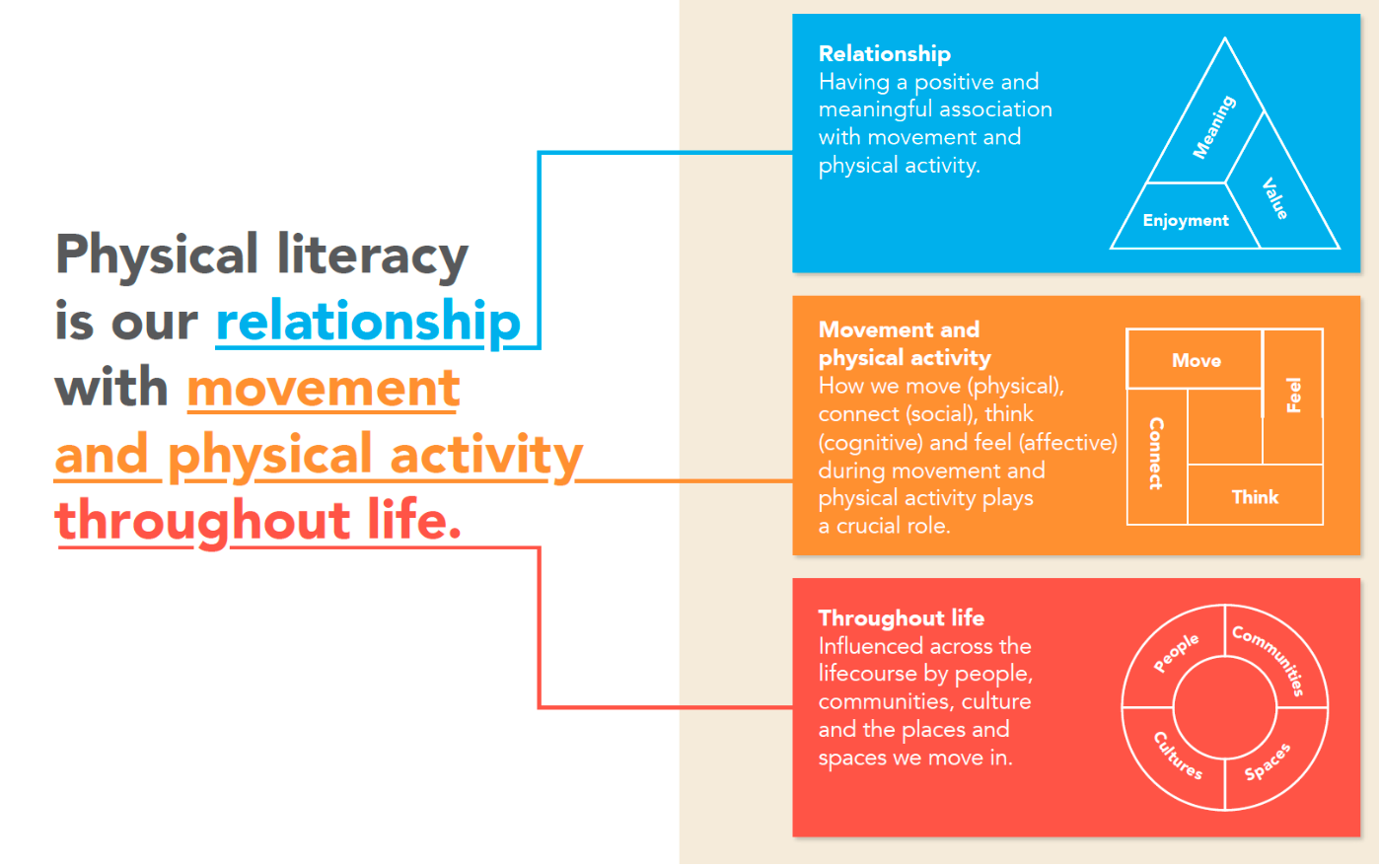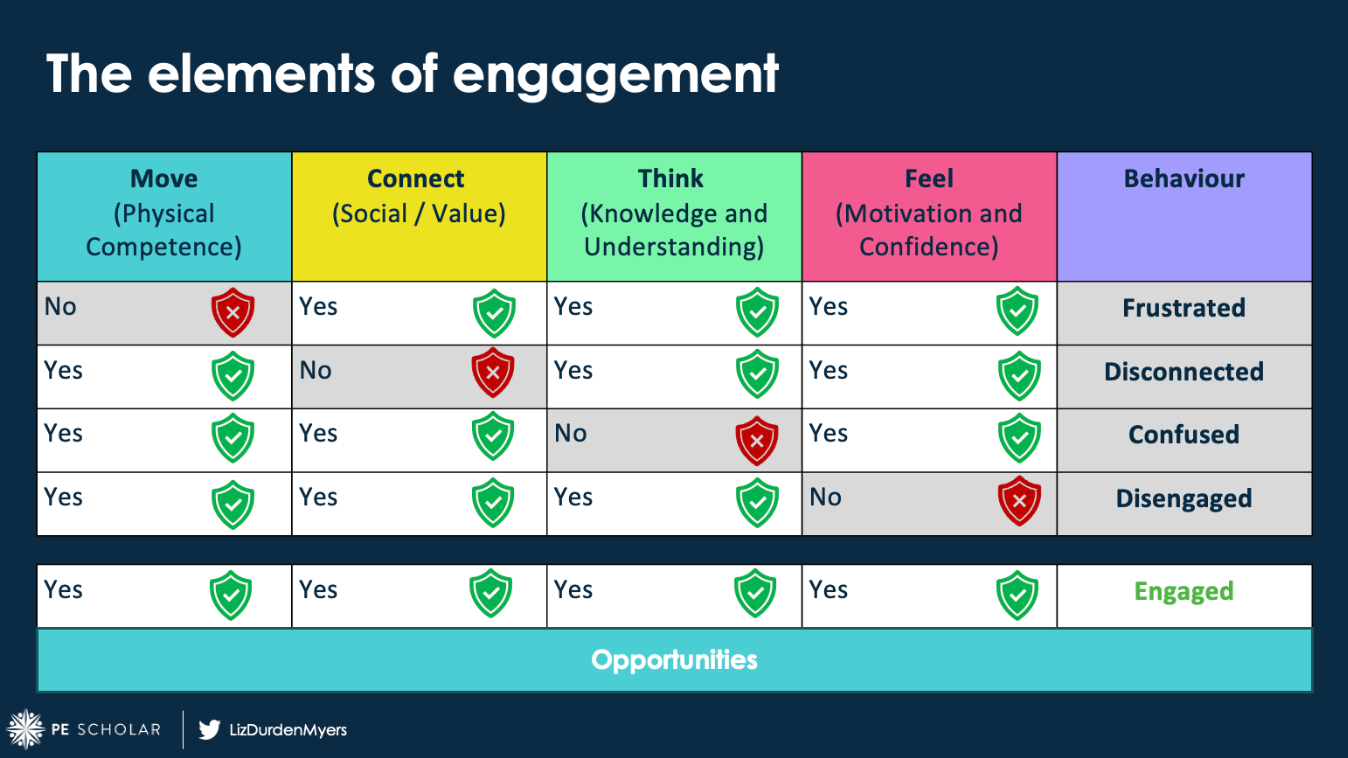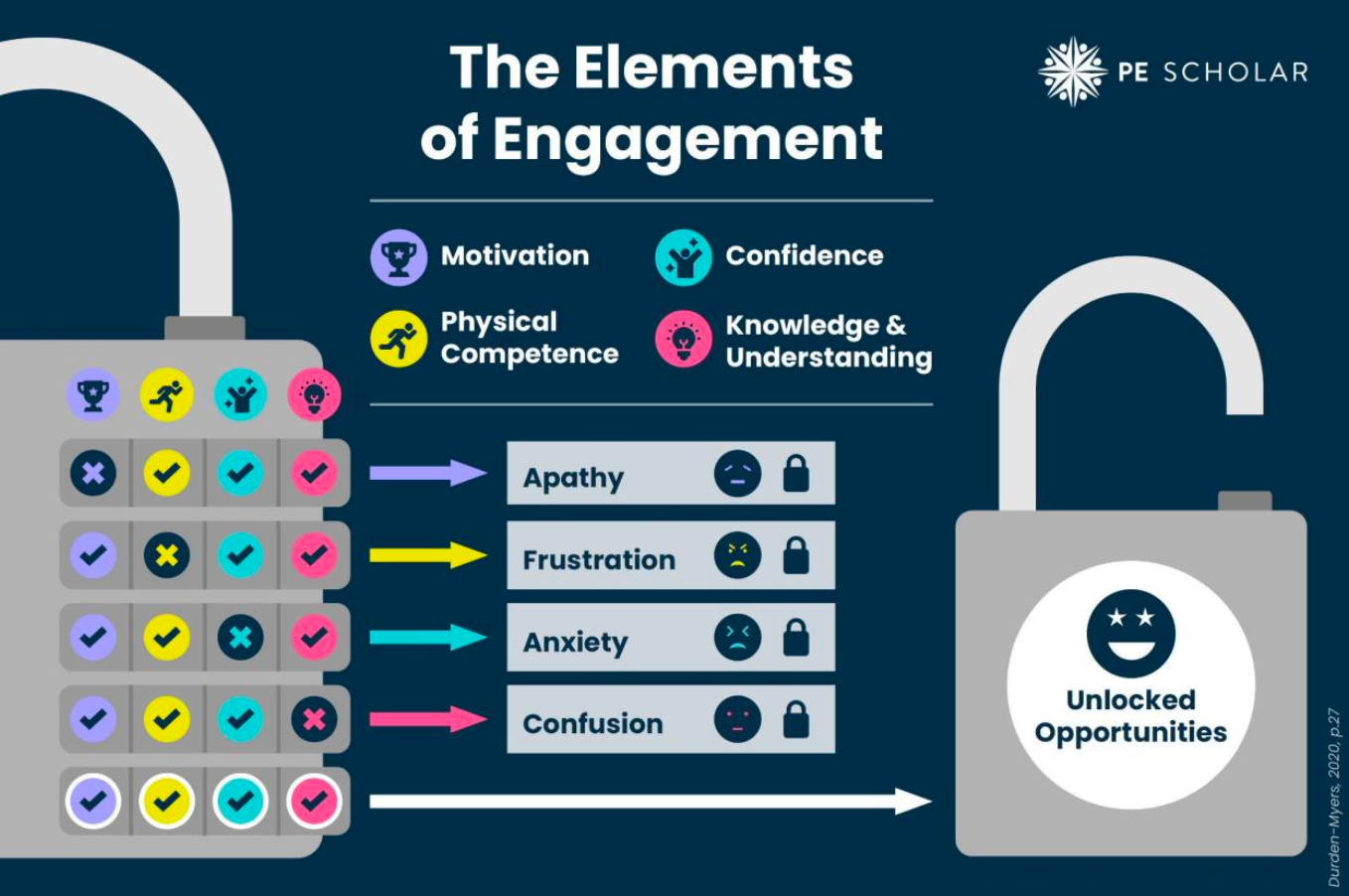
Physical literacy has a huge role to play in supporting the design and delivery of physical education in both secondary and primary school. Physical literacy can be a complex concept to get your head around and there is little guidance on what physical literacy informed PE looks like in practice. In this short summary we will outline just some of the many key principles that can help you embed physical literacy into your practice.

Sport England Consensus Statement
Before we jump into how physical literacy can support your practice we just wanted to highlight the Sport England Physical Literacy Consensus Statement that was launched in September 2023. The aim of the consensus statement was to create a common definition and shared language for physical literacy across a range of sectors in England.

For more information please visit the Sport England website here.
Key Messages
Put simply, physical literacy aims to promote engagement in physical activity throughout life by creating a positive relationship with movement and physical activity. Key to achieving this aim is:
1. the holistic development of the individual
2. the importance of positive and meaningful experiences
3. ensuring that physical activity and movement experiences are personalised and inclusive.
In this article we are just going to look at how the holistic development of the individual can unlock engagement in physical activity.
Unlocking Engagement in Physical Activity
Physical literacy highlights the importance of holistic development in order to promote active participation in physical activity. The different domains that are integral to engagement in physical activity are outlined as:
- Move (Physical Competence)
- Connect (Social / Value)
- Think (Knowledge and Understanding)
- Feel (Motivation and Confidence)
The table below outlines that when any of these areas are not secure there is likely to be a barrier to participation.

Adapted from Durden-Myers (2020)
Our role as physical educators is to provide as many opportunities as possible to positively influence the elements of engagement. By focusing on the holistic development of physical activity in our lesson plans we are more likely to be able to unlock physical activity engagement now and throughout life.

Adapted from Durden-Myers (2020)
Want to find out more?
The following books, blogs, podcasts and courses will help you delve deeper into the underpinning physical literacy principles and philosophy
Blogs
Read our previous Insights that explain physical literacy further:
- What is Physical Literacy?
- The four components of Physical Literacy
- Unlocking the Power of Physical Literacy
And look out for next week’s blog on how to develop and nurture Physical Literacy
Podcasts
Websites
Courses
Books
For further information please contact us or visit PE Scholar.


[…] Physical Literacy informed PE […]